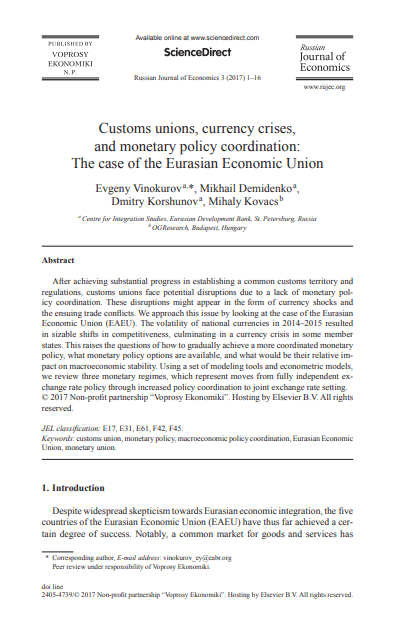Customs Unions, Currency Crises, and Monetary Policy Coordination: the Case of the Eurasian Economic Union
Vinokurov E., Demidenko M., Korshunov D., Kovacs, M. (2017) Customs Unions, Currency Crises, and Monetary Policy Coordination: the Case of the Eurasian Economic Union. Russian Journal of Economics, (3)3.
After achieving substantial progress in establishing a common customs territory and regulations, customs unions face potential disruptions due to a lack of monetary policy coordination. These disruptions might appear in the form of currency shocks and the ensuing trade conflicts. We approach this issue by looking at the case of the Eurasian Economic Union. The volatility of national currencies in 2014–2015 resulted in sizable shifts in competitiveness, culminating in a currency crisis in some member states. This raises the questions of how to gradually achieve a more coordinated monetary policy, what monetary policy options are available, and what would be their relative impact on macroeconomic stability. Using a set of modeling tools and econometric models, we review three monetary regimes, which represent moves from fully independent exchange rate policy through increased policy coordination to joint exchange rate setting.
